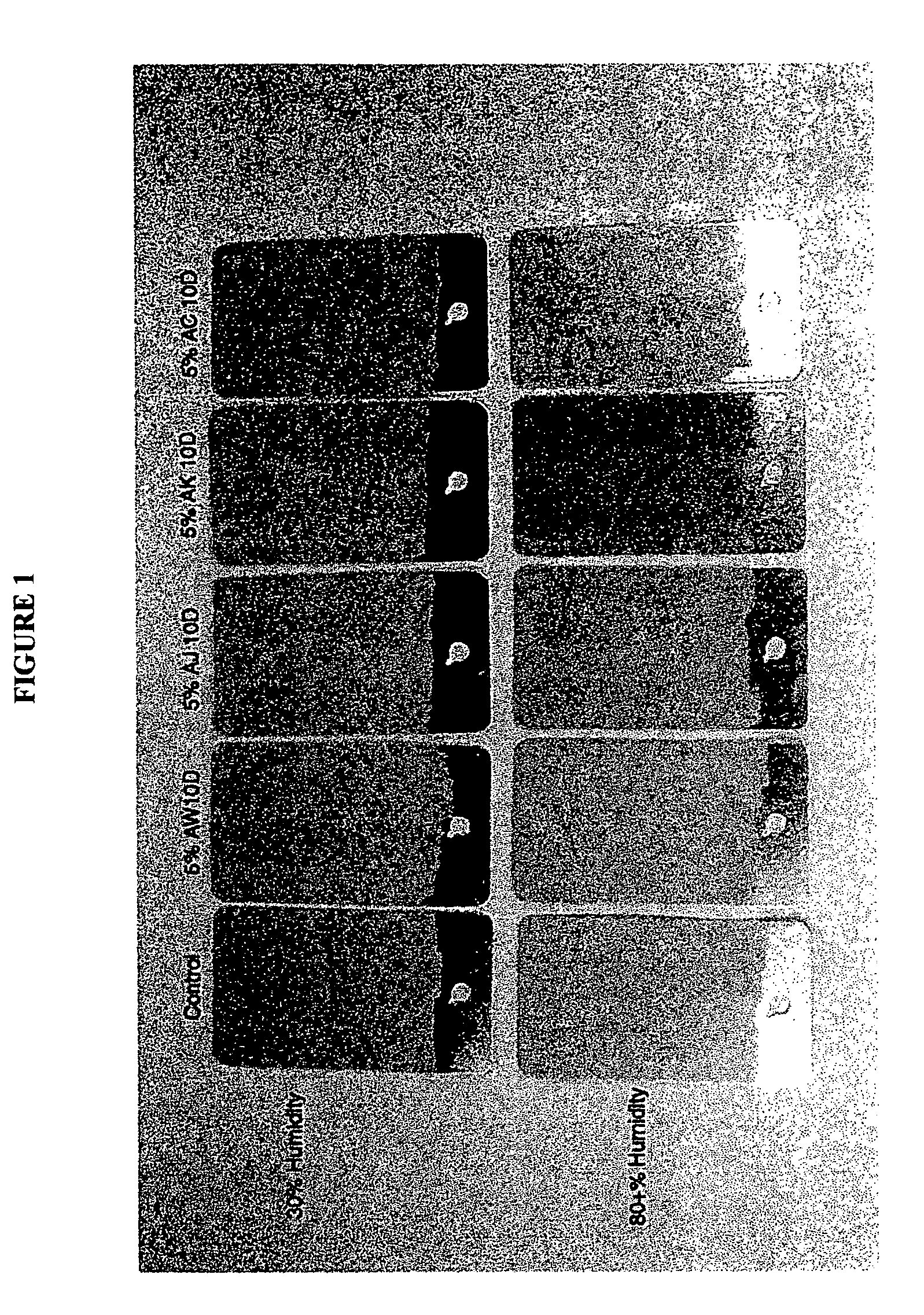Color stable antimicrobial coatings
a technology of antimicrobial coatings and silver ions, applied in the direction of biocide, biocides, synthetic resin layered products, etc., can solve the problems of discoloration of polymer resins or coating compositions, limited success in coating applications, and limited commercial utility of antimicrobial agents, so as to achieve enhanced color stability
- Summary
- Abstract
- Description
- Claims
- Application Information
AI Technical Summary
Benefits of technology
Problems solved by technology
Method used
Image
Examples
examples 1 and 2
, COMPARATIVE EXAMPLES CE1 AND CE2
[0051] A series of coatings were prepared within and outside the scope of the present invention and exposed to various environmental conditions that they may experience in commercial use to demonstrate the unexpected color stability of the silver / copper antimicrobial agents in a two-part, 100% solids, fast curing epoxy coating system, Corro-Cote FS from Corro-Shield International of Rosemount, Ill. All formulations were prepared by adding the indicated antimicrobial agent to the resin component (part A) of the two-part epoxy composition prior to mixing the two parts. The coating was applied as a single layer (approximately 0.5 mil thick) by hand using a brush to unprimed aluminum Q panels (approx. 2″ by 3.5″ coupons) and allowed to cure at room temperature and room humidity (˜20%). The unmodified coating, Comparative Example CE1, cured to a light gray color. Table 1 sets forth the specific formulation of each example and comparative example: amounts...
PUM
| Property | Measurement | Unit |
|---|---|---|
| water absorption | aaaaa | aaaaa |
| water absorption | aaaaa | aaaaa |
| water absorption | aaaaa | aaaaa |
Abstract
Description
Claims
Application Information
 Login to View More
Login to View More - R&D
- Intellectual Property
- Life Sciences
- Materials
- Tech Scout
- Unparalleled Data Quality
- Higher Quality Content
- 60% Fewer Hallucinations
Browse by: Latest US Patents, China's latest patents, Technical Efficacy Thesaurus, Application Domain, Technology Topic, Popular Technical Reports.
© 2025 PatSnap. All rights reserved.Legal|Privacy policy|Modern Slavery Act Transparency Statement|Sitemap|About US| Contact US: help@patsnap.com

